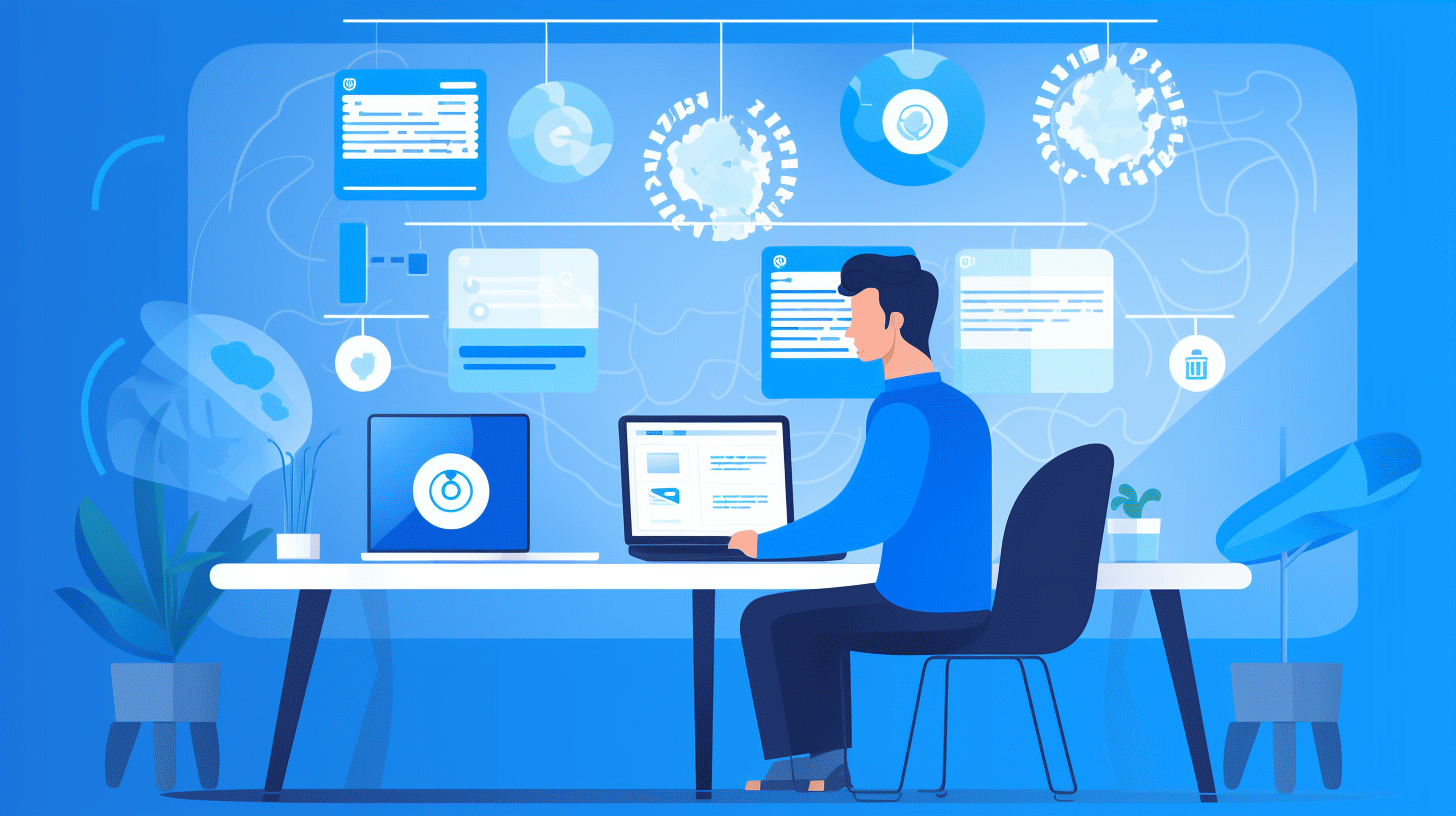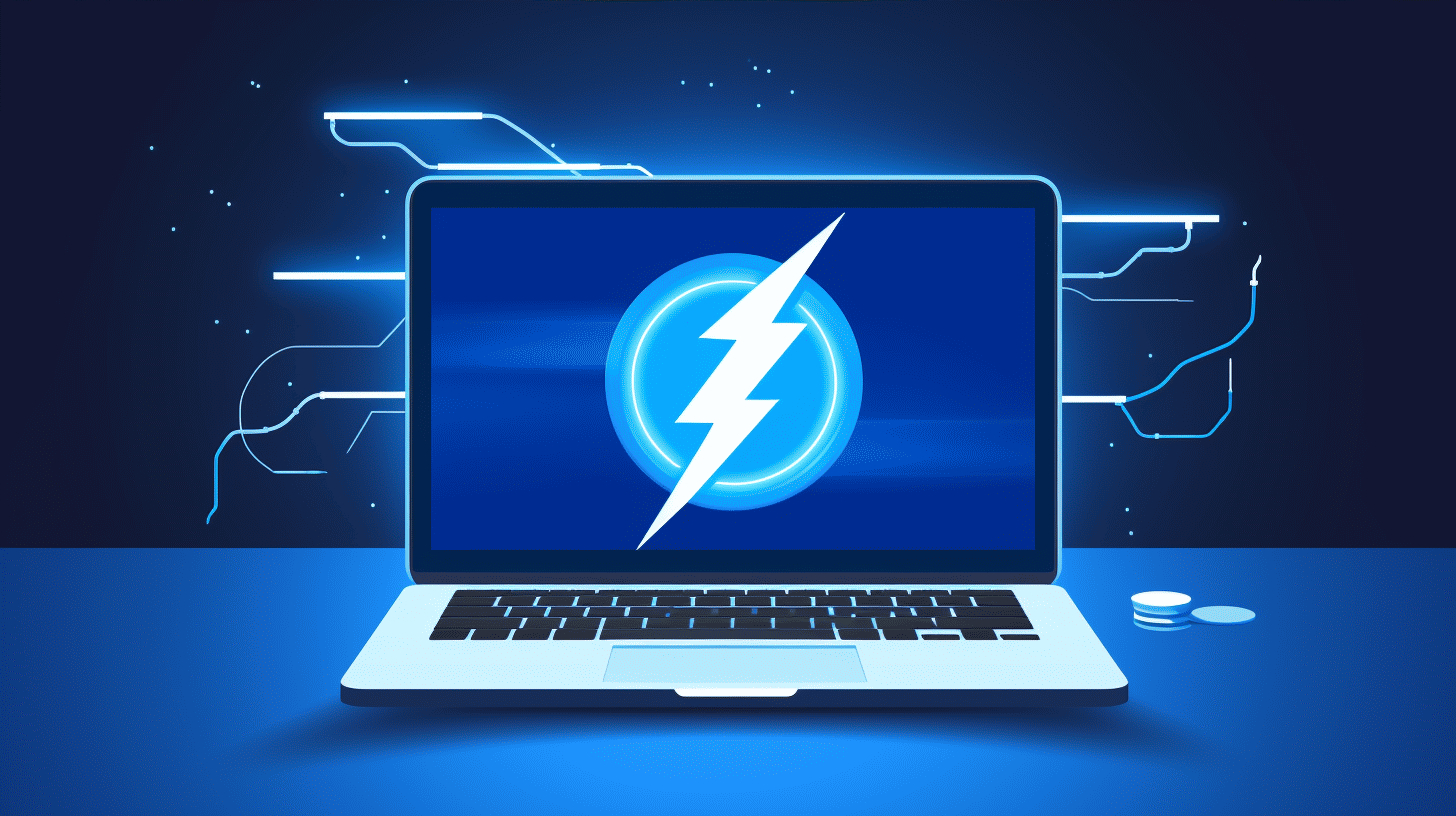管理多个 WordPress 网站可能是一项艰巨的任务。从跟上更新和安全措施到确保高效的工作流程和最大限度地减少停机时间,需要克服许多挑战。但是,只要采取正确的策略和最佳实践,管理多个 WordPress 网站就可以成为一个精简而高效的过程。
在本文中,我们将探讨管理多个 WordPress 网站以确保安全性和效率的最佳实践。从标准化插件和主题到利用 WordPress 管理工具和整合托管,我们将介绍一系列策略来帮助您有效地管理您的网站。
无论您是网页设计师、开发人员还是拥有多个 WordPress 网站的企业主,这些最佳实践都将帮助您在网站管理任务中保持井然有序、安全和高效。让我们深入探索如何有效地管理多个 WordPress 网站!
管理多个 WordPress 网站的最佳实践
管理多个 WordPress 网站可能是一项艰巨的任务,但只要制定正确的策略,您就可以简化工作流程并确保所有网站的一致性。在本文中,我们将探讨一些最佳实践,以帮助您有效地管理多个 WordPress 网站。
标准化插件和主题
管理多个 WordPress 网站的主要挑战之一是在所有网站上保持一致性。手动更新每个网站上的插件和主题可能非常耗时且容易出错。为了克服这一挑战,必须对所有网站使用的插件和主题进行标准化。
通过标准化插件和主题,您可以:
- 确保所有站点的功能和设计保持一致。
- 通过在一个地方更新插件和主题来简化维护过程。
- 降低不同版本插件和主题之间兼容性问题的风险。
例如,您可以创建符合您要求的已批准插件和主题列表,并将其安装在您的所有网站上。这样,您可以轻松管理更新并确保所有网站都使用最新版本。
使用 WordPress 管理工具
为了高效管理多个 WordPress 网站,使用 WordPress 管理工具可以带来翻天覆地的变化。这些工具提供了一个集中式平台,可从一个仪表板监控和控制所有网站。以下是一些流行的 WordPress 管理工具:
- MainWP:提供用户友好的界面来管理多个站点。
- InfiniteWP:允许您通过单击更新所有网站上的插件、主题和 WordPress 核心。
- CMS Commander:提供一套全面的工具来管理多个 WordPress 网站,包括备份、安全和内容管理。
- ManageWP:让您从一个地方管理和更新多个 WordPress 网站,以及网站正常运行时间监控和性能优化等附加功能。
- WPRemote:提供一个简单的界面,用于管理多个 WordPress 网站的更新、备份和安全设置。
这些工具可以自动执行多项任务,节省您的时间和精力,同时确保您的网站是最新的。
通过整合托管简化工作流程
整合托管后,管理多个 WordPress 网站会变得更加高效。整合托管意味着将所有网站托管在单个平台或服务器上。这种方法有几个好处:
- 简化了管理流程并减少了在不同托管服务提供商之间切换的需要。
- 提供更好的控制和更轻松的访问您的所有网站。
- 通过利用批量定价和共享资源来降低成本。
整合托管可以通过以下方式实现:
- 选择提供可扩展且灵活的托管计划以容纳多个网站的网络托管商。
- 将您的所有网站迁移到单个托管服务提供商并优化 WordPress 的服务器环境。
通过整合托管,您可以简化工作流程,并将更多精力放在管理和优化您的网站上,而不是处理多个托管平台。
总之,管理多个 WordPress 网站需要仔细规划和使用正确的工具。通过标准化插件和主题、使用 WordPress 管理工具和整合托管,您可以高效地管理所有网站,同时确保一致性并简化工作流程。
有关简化 WordPress 开发工作流程的更多见解,您可以访问 此链接.
WordPress 网站的安全措施
WordPress 是全球最受欢迎的内容管理系统之一,为数百万个网站提供支持。然而,它的流行也使它成为恶意行为者的目标,他们试图利用漏洞并获得未经授权的访问。作为网站所有者,实施强大的安全措施来保护您的 WordPress 网站及其宝贵数据至关重要。
在本文中,我们将探讨一些有助于保护您的 WordPress 网站免受威胁的基本安全措施。通过遵循这些预防措施,您可以增强网站的安全性并确保访问者信息的安全。
密码管理和身份验证
任何网站(包括 WordPress)的基本安全措施之一就是有效的密码管理。以下是一些提高密码安全性的技巧:
- 使用强而独特的密码:避免使用常见或容易猜到的密码。大写和小写字母、数字和符号的组合可以构成强密码。
- 限制登录尝试次数:限制登录尝试次数可防止暴力攻击,黑客会尝试多种登录组合来获取访问权限。在一定次数的失败尝试后,用户应被暂时锁定。
🔐 专业提示:要管理和实施强密码策略,请考虑使用密码管理工具或插件,例如 有效的 WordPress 网站管理。它可以帮助您生成强密码、安全地存储密码并简化用户的登录流程。
SSL 证书的实施
确保您的网站与用户之间的通信安全至关重要。通过实施 SSL(安全套接字层)证书,您可以确保您的网站与访问者之间传输的数据得到加密和保护。以下是 SSL 证书必不可少的原因:
- 数据加密:SSL 证书对敏感信息(例如登录凭据和个人数据)进行加密,防止未经授权的访问。
- 信任和可信度:SSL 证书向您的访问者表明您优先考虑他们的安全,从而增强他们对您网站的信心。
- SEO 优势:Google 等搜索引擎优先考虑具有 SSL 证书的网站,这可以使网站在搜索结果中排名更高。
🔒 有趣的事实:您是否知道拥有 SSL 证书的网站会在地址栏中显示挂锁图标,表示连接安全?用户更有可能信任并访问具有这种视觉安全确认的网站。
使用 WordPress 安全插件
WordPress 安全插件是功能强大的工具,可以帮助保护您的网站免受各种威胁和漏洞的侵害。这些插件提供恶意软件扫描、防火墙保护和登录锁定等功能。以下是一些值得考虑的流行 WordPress 安全插件:
- Wordfence Security:一个全面的安全插件,包括防火墙、恶意软件扫描程序和登录保护。
- Sucuri Security:提供网站监控、恶意软件扫描和 DDoS 保护等功能。
- iThemes Security:提供暴力破解保护、文件更改检测和数据库备份。
🛡️ 专业提示:请记住定期更新您的安全插件,以确保您拥有最新的防护措施以抵御新兴威胁。
主题、插件和 WordPress 核心文件的定期更新
保持 WordPress 安装更新对于维护安全的网站至关重要。WordPress 会定期发布更新,包括错误修复、安全补丁和性能增强。同样,更新主题和插件也同样重要。未能更新可能会让您的网站容易受到黑客的攻击,这些黑客会利用已知的漏洞。
🔄 有趣的事实:您是否知道 74% 的 WordPress 攻击都是插件和主题版本过时造成的?通过保持警惕并及时更新,您可以显著降低安全漏洞的风险。
实施强大的安全策略对于保护您的 WordPress 网站及其所拥有的宝贵数据至关重要。通过遵循这些安全措施,包括强密码管理、SSL 证书、安全插件和定期更新,您可以显著降低恶意攻击的风险并确保您的网站及其访问者的安全。
请记住,有效的 WordPress 网站管理不仅仅是创建出色的内容和设计;它还涉及优先考虑安全性,为您的用户提供安全的体验。
立即保护您的 WordPress 网站并确保您高枕无忧!
灾难恢复和最小化停机时间
想象一下这样的场景:几个月来,您一直在努力打造 WordPress 网站,倾注心血打造引人入胜的内容、完善设计并吸引忠实的粉丝。这是您的数字宝贝,您想保护它免受任何可能的伤害。不幸的是,灾难随时可能发生,无论是硬件故障、网络攻击,还是简单的人为错误。这就是灾难恢复和最小化停机时间发挥作用的地方。
当谈到灾难恢复和最大限度地减少 WordPress 网站的停机时间时,您必须采取的一个关键步骤是定期备份您的网站。定期备份为您提供了安全网,使您能够在出现问题时将网站恢复到以前的工作状态。让我们面对现实吧——总有一天会出问题。
定期备份 WordPress 网站可确保您拥有网站文件和数据库的干净、最新副本。此备份可作为您的后备计划和保险单,确保您的辛勤工作和宝贵数据得到保护。那么,如何高效、轻松地备份 WordPress 网站呢?
以下是一些可帮助您入门的提示:
- 自动化流程: 手动备份非常耗时,而且容易出现人为错误。选择可靠的 WordPress 管理服务,例如 Managed-WP,它提供自动备份功能。它省去了备份过程的麻烦,并确保定期备份您的网站,而您无需动手。
- 选择正确的备份频率: 备份频率取决于您更新网站的频率。如果您每天都进行更改,则最好选择每日备份计划。但是,如果您更新网站的频率较低,则每周或每月备份一次就足够了。评估您网站的需求并选择与您的更新计划相符的备份频率。
- 安全存储备份: 备份的质量取决于其存储位置。选择安全可靠的备份存储解决方案至关重要。考虑使用异地存储选项,例如云存储或外部硬盘。这可确保即使您的网站服务器受到威胁,您仍然可以访问备份。
请记住,灾难恢复和最小化停机时间是相辅相成的。通过定期备份您的 WordPress 网站,您可以在发生任何不可预见的事件时快速有效地恢复。立即采取必要的措施来保护您的网站并保护您的辛勤工作。不要等到为时已晚!
因此,无论您是经验丰富的网站所有者还是刚刚起步,都不要低估定期备份对于灾难恢复和最大限度减少停机时间的重要性。立即将其作为 WordPress 网站的优先事项,并放心地知道您已为可能遇到的任何障碍做好了准备。
要了解有关 Managed-WP 提供的功能以及它如何帮助进行灾难恢复和最大限度地减少停机时间的更多信息,请查看 托管WP功能 页。
访问和管理多个 WordPress 网站
您是否厌倦了为了管理 WordPress 网站而使用多个登录名和仪表板?好吧,您很幸运!有强大的工具可供使用,它们可以让您从集中平台访问和管理多个 WordPress 网站,从而使您的生活更加轻松。使用这些方便的工具,告别在不同网站之间切换的麻烦,并简化您的工作流程。
利用多站点管理工具
ManageWP 是管理多个 WordPress 站点最流行、最可靠的工具之一。这款功能强大的多站点管理工具可让您从一个便捷的仪表板处理所有 WordPress 站点。使用 ManageWP,您可以:
- 高效管理多个站点:ManageWP 允许您从单一界面访问所有网站,而无需单独登录每个网站。您可以同时对多个网站执行更新、备份和其他管理任务。
- 监控站点性能:使用 ManageWP,您可以轻松关注所有 WordPress 网站的性能。获取网站正常运行时间、加载时间和其他关键指标的实时数据,以确保您的网站顺利运行。
- 自动执行日常任务:使用 ManageWP 自动执行日常任务,节省时间。安排备份、更新和安全扫描,这样您就可以专注于业务中更重要的方面。
- 增强安全性:使用 ManageWP 的内置安全功能维护 WordPress 站点的安全。您可以运行安全扫描、监控漏洞,甚至可以实施双因素身份验证以增强保护。
ManageWP 并不是管理多个 WordPress 网站的唯一选择。另一个流行的工具是 InfiniteWP。它提供类似的特性和功能,允许您从单个仪表板管理无限数量的 WordPress 网站。
使用这些强大的多站点管理工具来控制您的 WordPress 网站并简化您的工作流程。凭借其用户友好的界面和强大的功能,您会想知道如果没有它们您是如何管理的。那么,为什么要等待呢? 试用 ManageWP 或 InfiniteWP,立即体验集中式 WordPress 网站管理的便利!
结论
总之,管理多个 WordPress 网站需要仔细注意安全性和效率的最佳实践。通过标准化插件和主题、使用 WordPress 管理工具以及通过整合托管简化工作流程,网站所有者可以确保其网站的顺畅运行和一致的性能。
密码管理和身份验证、实施 SSL 证书以及使用 WordPress 安全插件等安全措施对于保护网站免受潜在威胁至关重要。定期更新主题、插件和 WordPress 核心文件对于优化安全性和保护网站也至关重要。
就灾难恢复和最小化停机时间而言,定期备份 WordPress 网站至关重要。这些备份可充当安全网,让网站所有者在发生任何数据丢失或网站故障时能够快速恢复其网站。
为了高效访问和管理多个 WordPress 网站,使用多站点管理工具可以大大简化流程。这些工具提供了一个用于管理所有网站的集中式仪表板,使网站所有者可以节省处理各种任务的时间和精力。
总之,遵循这些管理多个 WordPress 网站的最佳实践可以帮助确保您的在线业务的安全、高效和顺畅运行。考虑利用 Managed-WP,这是一个高级托管 WordPress 云托管平台,可简化基础设施并提供专家全天候解决问题。借助 Managed-WP,您可以专注于推动数字体验,同时将技术方面的问题交给有能力的人。了解有关 Managed-WP 的更多信息 在这里,.
常见问题
- 管理多个 WordPress 网站的最佳做法是什么?
管理多个 WordPress 网站的一些最佳实践包括使用集中管理工具、保持主题和插件为最新、使用强大而独特的密码、定期备份您的网站以及实施可靠的安全插件。
- 我是否应该使用一个集中管理工具来管理多个 WordPress 网站?
是的,使用 ManageWP、InfiniteWP 或 MainWP 等集中管理工具可以大大简化管理多个 WordPress 网站的过程。这些工具允许您从单个仪表板更新插件、主题和 WordPress 核心,并提供其他有用的功能。
- 保持主题和插件更新有多重要?
保持主题和插件更新对于 WordPress 网站的安全性和性能至关重要。过时的主题和插件可能存在黑客可以利用的漏洞。定期更新可确保您拥有最新的功能、错误修复和安全补丁。
- 为什么对每个网站使用强而独特的密码很重要?
为每个网站设置强密码和唯一密码对于防止未经授权的访问非常重要。如果一个网站被入侵,为每个网站设置唯一密码可确保其他网站的安全。LastPass 和 Dashlane 等密码管理器可以帮助生成和存储强密码。
- 我应该多久备份一次我的 WordPress 网站?
建议定期备份您的 WordPress 网站,最好是每天或每周备份一次。这可确保您在发生任何数据丢失或网站问题时拥有网站的最新副本。UpdraftPlus 和 VaultPress 等备份插件可以自动执行备份过程。



















